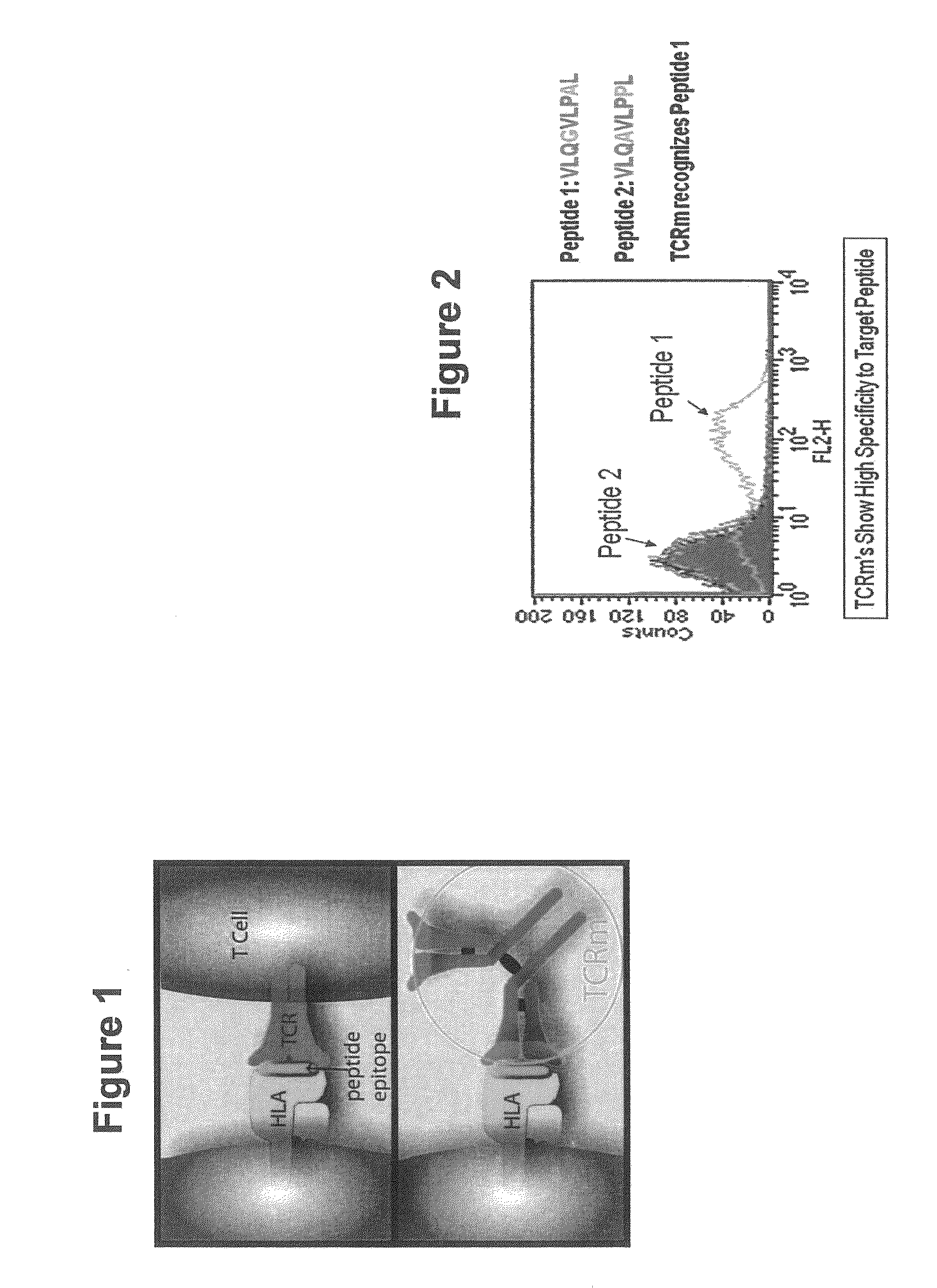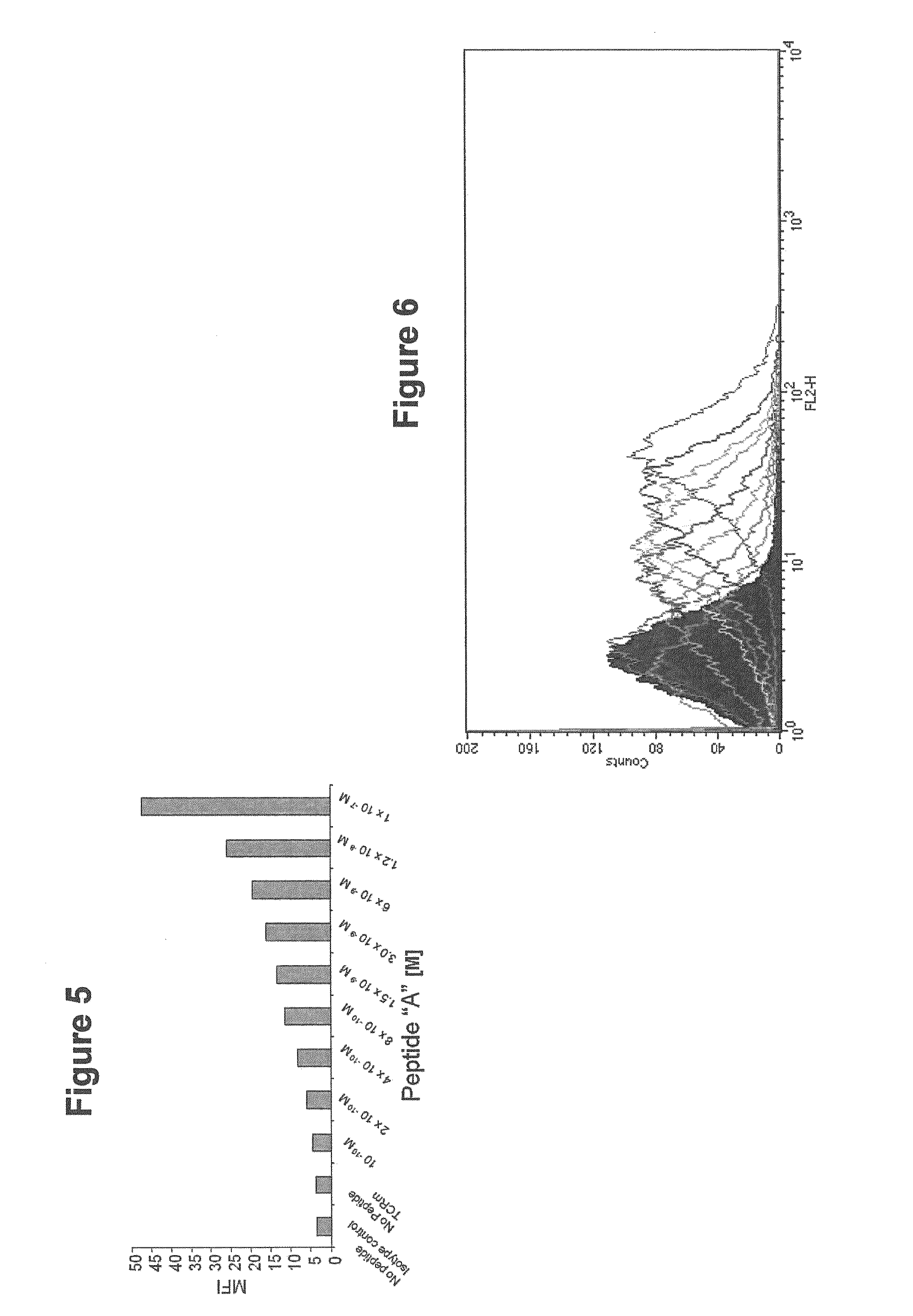Methods of assaying vaccine potency
a vaccine potency and method technology, applied in the field of methodology of producing antibodies, can solve the problems of inability to describe how (or if), inability to accurately predict the effect of vaccine potency, and significant number of patients (up to 70%) refractory to treatment with these antibody molecules
- Summary
- Abstract
- Description
- Claims
- Application Information
AI Technical Summary
Problems solved by technology
Method used
Image
Examples
example 1
[0115]Validation of previously identified hCGβ peptide epitopes by PolyTest. A major parameter determining cell-surface presentation of a given peptide is the affinity of the peptide for HLA class I molecules. In this regard, several lines of evidence, both at the biological and functional level, emphasize the choice of high affinity peptides in TCR mimic generation. Epitopes need to be selected that have the requisite binding affinity established to be successful. Our standardized PolyTest approach (Buchli et al., 2005; Buchli et al., 2006; and Buchli et al., 2004) is used in the determination of the inhibitory concentration (IC50) on positively identified peptide candidates. The method is quantitative and yields affinity values with a high degree of accuracy for each of the three peptides used in this example. Recent results published by Dangles et al. (2002) indicated that the TAA hCGβ possesses numerous antigenic determinants able to stimulate CD8+ T lymphocytes. In addition, se...
example 2
[0142]TCRm antibodies can readily detect de novo antigen processing and presentation in cells actively treated with an active immunotherapeutic (e.g. a vaccine composition) or from natural antigen expression (e.g. in virally infected or oncogenic tissues). These events can be tracked using flow cytometry staining as well as immunocytochemistry, with associated quantitation of observed values (FIGS. 15 and 16). An example of these studies is presented in FIG. 15, with data from control vaccine or target vaccine (Gp100 antigen) treated antigen presenting cells. There is a strong correlation between TCRm binding of HLA-peptide complexes present on the surface of vaccine treated cells and the presence of intracellular antigen. The temporal relationship between intracellular antigen detection and the appearance of specific HLA-peptide complexes will vary depending on the type of vaccine employed, e.g. peptide, intact protein, nucleic acid, viral vector, etc. Nevertheless, TCRm antibody b...
PUM
| Property | Measurement | Unit |
|---|---|---|
| dissociation constant | aaaaa | aaaaa |
| dissociation constant | aaaaa | aaaaa |
| dissociation constant | aaaaa | aaaaa |
Abstract
Description
Claims
Application Information
 Login to View More
Login to View More - R&D
- Intellectual Property
- Life Sciences
- Materials
- Tech Scout
- Unparalleled Data Quality
- Higher Quality Content
- 60% Fewer Hallucinations
Browse by: Latest US Patents, China's latest patents, Technical Efficacy Thesaurus, Application Domain, Technology Topic, Popular Technical Reports.
© 2025 PatSnap. All rights reserved.Legal|Privacy policy|Modern Slavery Act Transparency Statement|Sitemap|About US| Contact US: help@patsnap.com



